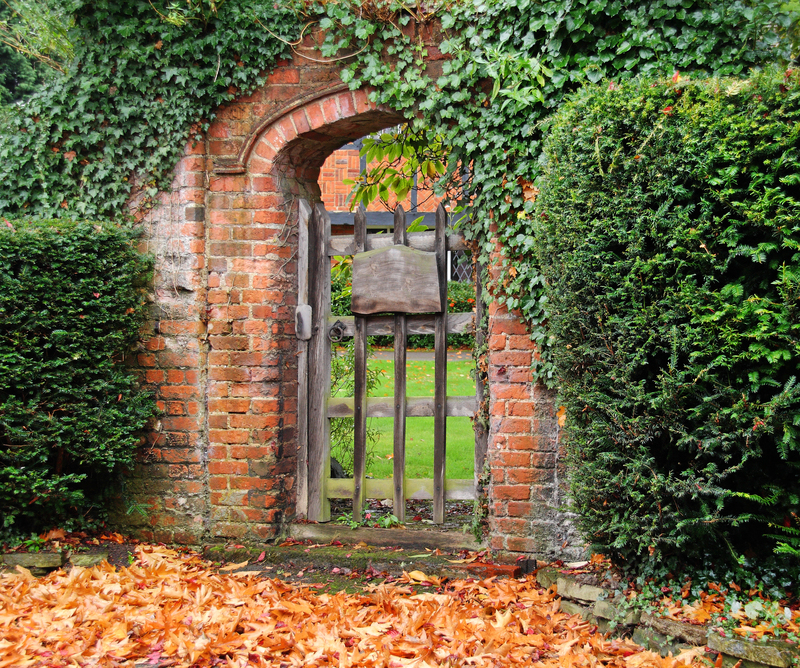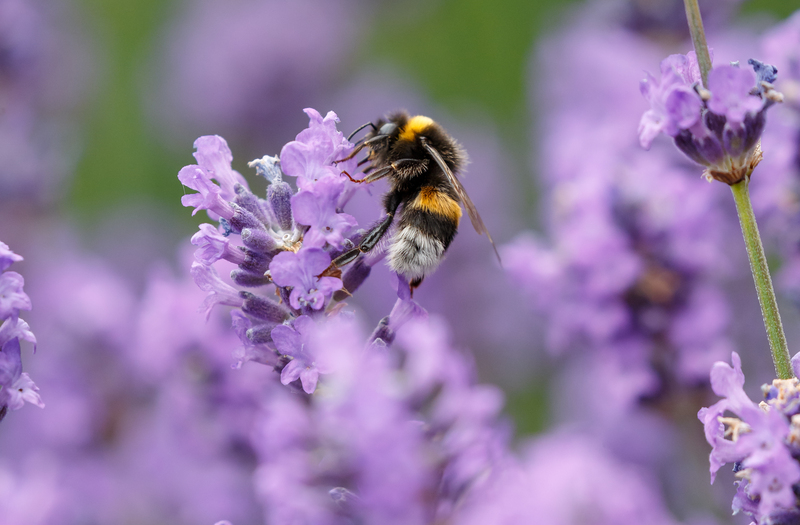The Ultimate Guide to Orchid Care
Posted on 06/09/2025
The Ultimate Guide to Orchid Care
Orchids are among the most exotic and popular houseplants in the world. Their graceful flowers and dramatic shapes add beauty to any space. However, growing healthy and thriving orchids is often seen as a challenge. This comprehensive guide to orchid care will help you unlock the secrets to growing vibrant, long-lived orchids at home. Whether you're a beginner or a seasoned enthusiast, you'll learn everything you need for your orchid growing journey.
Understanding Orchids: Brief Introduction
There are over 25,000 species of orchids, making them one of the largest and most diverse plant families on the planet. From the commonly grown Phalaenopsis (Moth Orchid) to the elegant Dendrobium and Cattleya, every orchid species has unique requirements. This guide focuses on essential orchid care tips that apply to the most popular types, helping you master the basics with confidence.
Diverse Beauty of Orchids
- Cymbidium: Known for their long-lasting flower spikes.
- Phalaenopsis: The beginner's favorite, with elegant, butterfly-like blooms.
- Dendrobium: Tall canes and vibrant flowers in a myriad of colors.
- Cattleya: Often called the "Queen of Orchids," with large, fragrant blossoms.
- Oncidium: Dancing-Lady Orchids, prized for patterned petals.
By understanding your orchid's specific type, you can tailor your plant care for the best results.

Choosing the Right Orchid
Selecting an orchid suited to your environment is the first step to success. Phalaenopsis orchids are best for beginners, while experienced growers might enjoy the challenge of more demanding species like Vanda or Miltonia. When purchasing, look for healthy, disease-free plants with strong roots and vibrant leaves.
What to Look for When Buying Orchids
- Firm, green roots (never mushy or blackened)
- Unblemished leaves, free from spots or yellowing
- Active new growth (such as new leaves or roots)
- No signs of pests like mealybugs or spider mites
Optimal Light for Orchids - Essential to Blooming
Lighting is a crucial element in orchid plant care. Most common orchids prefer bright, indirect light. Direct sun can scorch delicate leaves, while insufficient light can prevent flowering. Placing your orchids near an east- or west-facing window is usually ideal.
How Much Light do Orchids Need?
- Phalaenopsis: Thrives in low to medium, filtered light. Perfect for north or east windows.
- Cattleya and Dendrobium: Need higher light intensity, but avoid midday direct sun.
- Cymbidium: Prefer brighter locations, suitable for south-facing windows with sheer curtains.
Use the hand shadow test: If your hand casts a soft shadow on the leaves, the light intensity is about right.
Watering Orchids - Balancing Moisture
Improper watering is the number one cause of orchid failure. Here's how to master the art of watering orchids:
General Watering Guidelines for Orchid Plants
- Water once per week in winter, and twice per week in summer for most orchids.
- Allow the top 1 inch of the potting medium to dry out before watering again.
- Use lukewarm, distilled or rainwater to avoid mineral buildup.
- Avoid letting your orchid sit in standing water, as this can cause root rot.
Always water in the morning, so leaves dry out before evening. This prevents fungal diseases.
Humidity & Air Circulation - A Tropical Touch
Native to steamy, tropical environments, orchid flowers thrive in 40-70% humidity. Most indoor air is much drier, especially in heated homes. Increase humidity around your orchid plants with these simple methods:
- Use a humidity tray - Place a shallow tray of pebbles filled with water near your orchids.
- Mist leaves lightly in the morning (avoid water on blooms).
- Group plants together - Plants naturally increase local humidity.
- Consider a small room humidifier if you grow many orchids.
Good air movement is equally important for orchid health, as it prevents mold and helps the medium dry evenly. Use an oscillating fan in your orchid room, but avoid strong drafts.
Best Orchid Potting Mix and Repotting Tips
Unlike typical houseplants, orchids require a special potting medium - not soil! Epiphytic orchids (like Phalaenopsis and Cattleya) need their roots exposed to air. Use a chunky, fast-draining mixture of:
- Bark chips (fir bark or orchid bark)
- Sphagnum moss
- Perlite or charcoal
- Specialty orchid potting mixes are available in most garden centers.
When and How to Repot Orchids
Repot your orchid every 1-2 years, or when the potting medium breaks down. Early spring is the best time, right after flowering ends.
- Gently remove the orchid from its pot.
- Trim away dead or mushy roots.
- Place in fresh medium, ensuring roots are not packed too tightly.
- Water lightly, and avoid fertilizing for 1-2 weeks after repotting.
Fertilizing Orchids - Feeding for Growth and Flowers
Feeding orchids isn't difficult. Use a weak, balanced orchid fertilizer (such as 20-20-20) once a month during the growing season (spring and summer). Dilute the fertilizer to half the recommended strength. Avoid fertilizing when the plant is dormant or just after repotting.
Top Fertilizing Tips for Healthy Orchids
- Follow the rule: "Weakly, weekly" - dilute fertilizer and apply often.
- Leach the pot every couple of months with plain water to prevent salt build-up.
- Use a bloom booster formula (higher in phosphorus) to encourage flowering in late summer and fall.
Temperature Requirements for Orchids
Most common orchid varieties prefer daytime temperatures of 65-80?F (18-27?C), with nighttime drops of about 10-15?F. Some species, such as Cymbidium, require cooler nights to set buds. Avoid sudden temperature swings and keep orchids away from cold drafts or heating vents.
Tips for Providing Optimal Temperature
- Use a thermometer to monitor your grow area.
- If buds drop before opening, temperature stress may be to blame.
- Short, cool nights in autumn can help induce orchid flowering.
Common Orchid Pests and Problems
Even the most diligent gardeners may encounter orchid pests or diseases. Regularly inspect your plants for signs of trouble, including:
- Mealybugs: White, cottony patches on leaves and roots.
- Spider Mites: Fine webs, yellow stippling, and leaf drop.
- Scale Insects: Brown, shell-like bumps on stems and leaves.
- Root Rot: Mushy, black, or foul-smelling roots (due to overwatering).
Treat pests with insecticidal soap or wipe leaves with cotton swabs dipped in rubbing alcohol. Remove and discard infected plant material and repot in fresh medium if necessary.
Preventing Common Orchid Problems
- Quarantine new plants before introducing to your collection.
- Water early in the day and allow leaves to dry.
- Disinfect tools and pots between uses.
- Check for pests regularly as part of your orchid maintenance routine.
Encouraging Orchids to Bloom Again
How do you make orchids bloom again? This is the number one question from orchid lovers. Many orchids only bloom once per year, but with proper care, you can enjoy more frequent and reliable flowering cycles.
Key Steps for Reblooming Orchids
- Provide a nighttime temperature drop in autumn.
- Increase light intensity slightly, if possible.
- Continue "weakly, weekly" feeding until spike appears, then reduce fertilizer.
- Do not trim healthy spikes on Phalaenopsis; they may rebloom from nodes.
Patience is vital! Orchids sometimes rest for several months before showing new spikes. Avoid overwatering or fertilizing during dormancy.
Orchid Care FAQ
- Do orchids need special pots?
Yes! Pots with drainage holes are essential. Clear plastic pots allow you to monitor root health easily. - Should I cut spent orchid flower spikes?
For Phalaenopsis, you can trim above a node to encourage reblooming. Remove old, brown, or shriveled spikes entirely. - Why are my orchid's leaves turning yellow?
Causes include overwatering, too much sunlight, or old age. Old leaves naturally yellow and drop off. - How long do orchids live?
With proper care, most orchids can live 10-20 years or more, blooming year after year!

Top Orchid Care Mistakes and How to Avoid Them
- Overwatering - The most common cause of death. Allow roots to breathe and medium to dry between watering.
- Not Enough Light - No blooms? Try moving to a brighter spot out of direct sun.
- Using Regular Potting Soil - Always use specialized orchid mix.
- Ignoring Pests - Check for pests at every watering session, and act quickly at the first sign.
- Failing to Repot - Orchids suffocate when the mix breaks down. Repot every 1-2 years.
Conclusion: Master Orchid Growing With Confidence
Orchids don't have to be mysterious or difficult. With this ultimate guide to orchid plant care, anyone can enjoy the reward of luxurious blooms and lush foliage indoors. Remember:
- Provide optimal light, not direct sun.
- Water with care, don't let roots stay soggy.
- Maintain humidity, and offer good air flow.
- Fertilize wisely, and repot as needed for healthy roots.
- Inspect regularly, act early on pest or disease issues.
Whether you care for a single elegant Phalaenopsis or maintain a lush collection, these practical orchid care tips will help your plants thrive for years. Happy orchid growing!
```
